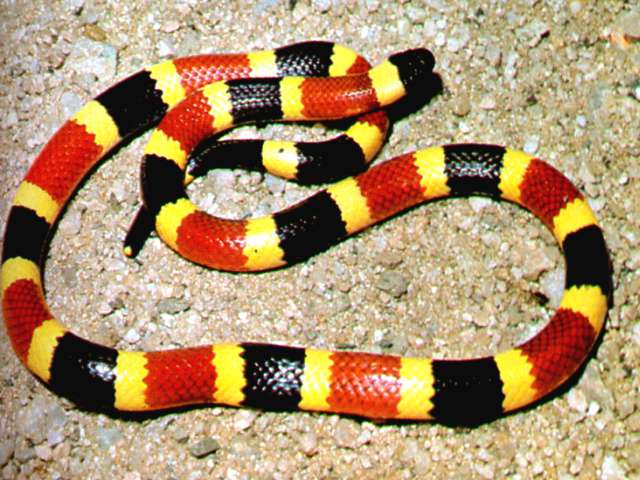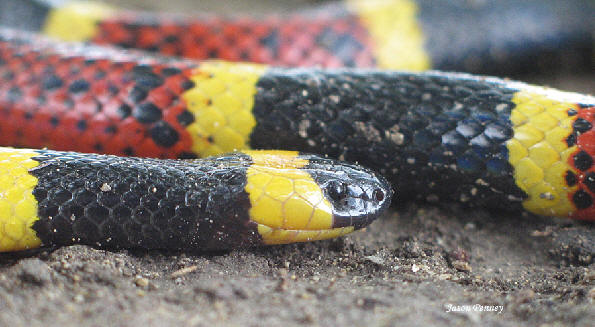Coral Snake
|
The Coral Snakes inhabit Mexico, Central America, and N South America and occupies a variety of habitats. Usually they are found beneath debris or under flat wood in all sorts of places like very dry areas, areas with a lot of scrubs that offers protection to wet areas on the borders of swamps etc. and spend most of their lives burrowed underground or in leaf piles.
The favourite prey of the coral snake is primarily other reptiles and small lizards, amphibians like frogs and small mammals. It's cannibalistic and doesn't refrain from eating other coral snakes. Young birds and insects also belong to its daily diet. To release its venom into a prey it has to squeeze its venom containing glands by chewing on its prey. Prey usually dies from either shock or from respiratory paralysis (effectively suffocation) caused by the neurotoxic venom.
Usually they are shorter than 40 inches (1 meter) and have smaller mouths and fangs. Coral snakes are easy to recognize with their distinctive coloration. They have alternating red, yellow and black bands starting with black - yellow - black - yellow - red - black - yellow - red. The yellow bands are shorter than the black and red bands. There does however exist counterfeit Coral Snakes with alternating yellow and red bands not flanked by black bands.
Many snakes look like the coral snake. A rhyme about the order of the coloured stripes helps you tell them apart, but don’t get too close! Rhyme: “Red and yellow, kills a fellow; Red and black is safe for Jack”. Coral snakes [venomous] have red and yellow touching; scarlet king snakes [non-venomous] have red and black. The venom of the Coral Snake is neurotoxic, paralyzing the nerves. The coral snake usually hangs on while biting, injecting as much venom as possible. There is a high percentage of fatalities from the coral snake bite. Treatment should start as soon as possible. A bite at first seems anticlimactic. There is little or no pain or swelling at the site of the bite, and other symptoms can be delayed for 12 hours. However, if untreated by antivenin, the neurotoxin begins to disrupt the connections between the brain and the muscles, causing slurred speech, double vision, and muscular paralysis, eventually ending in respiratory or cardiac failure.
|

